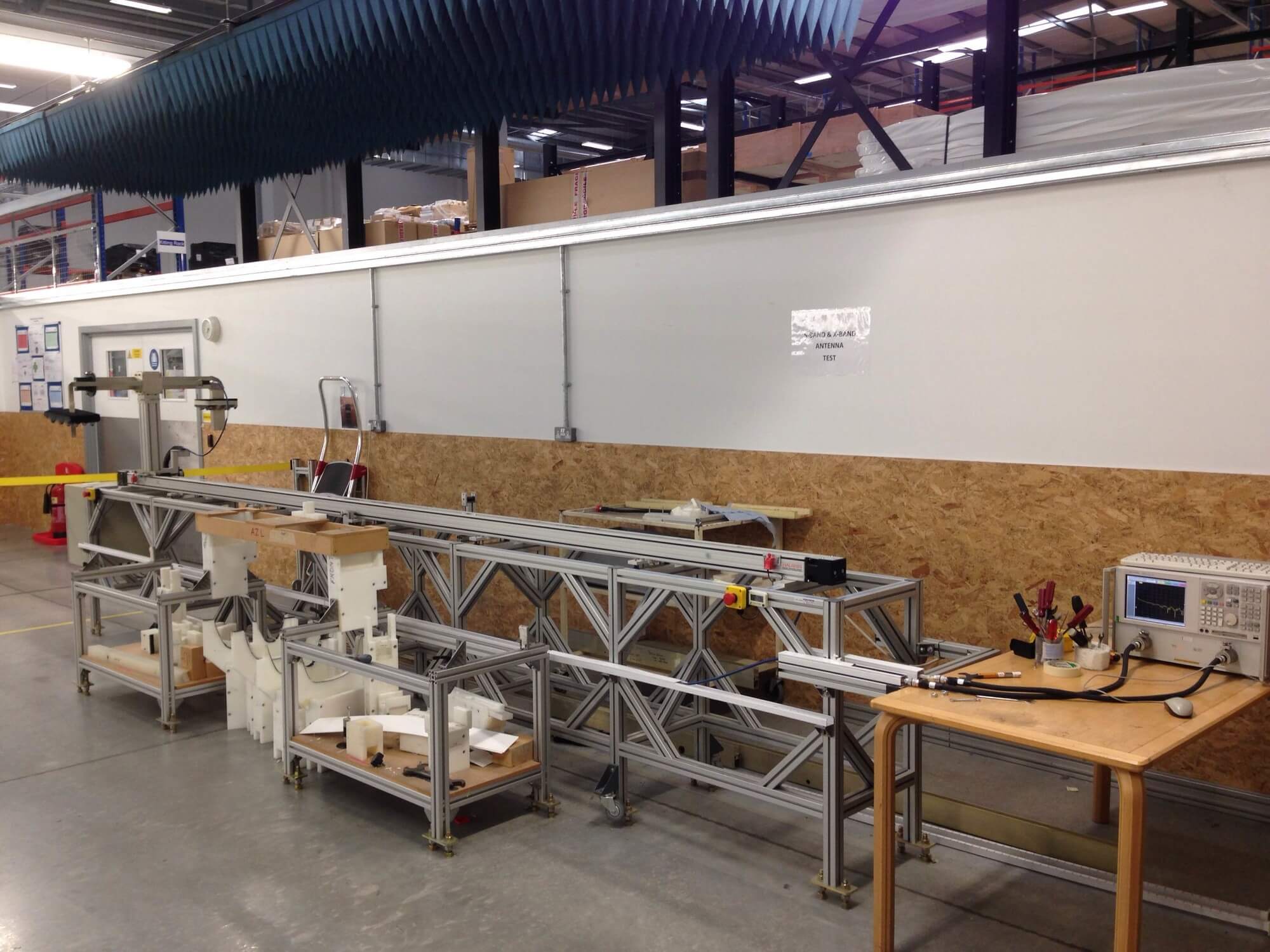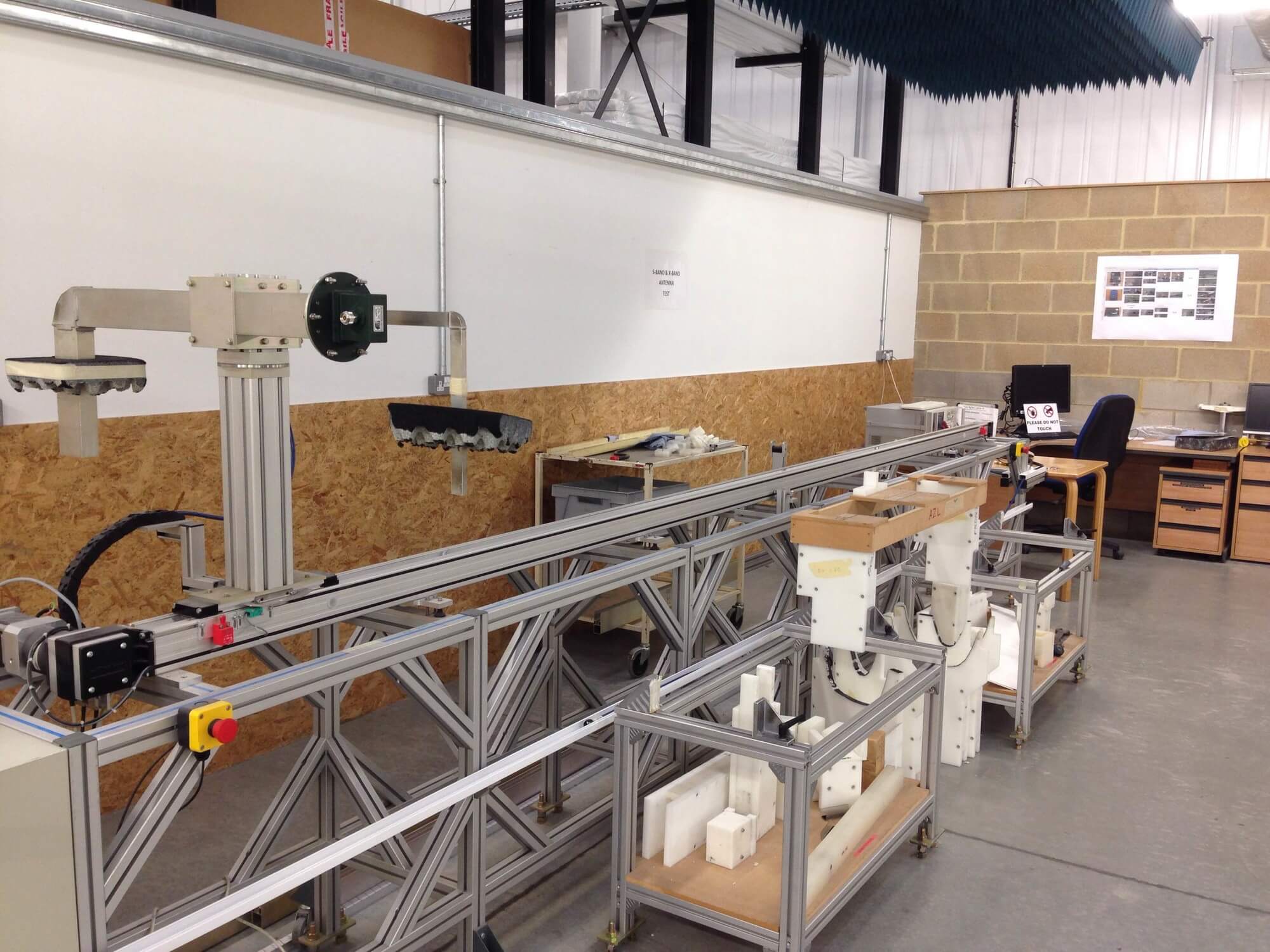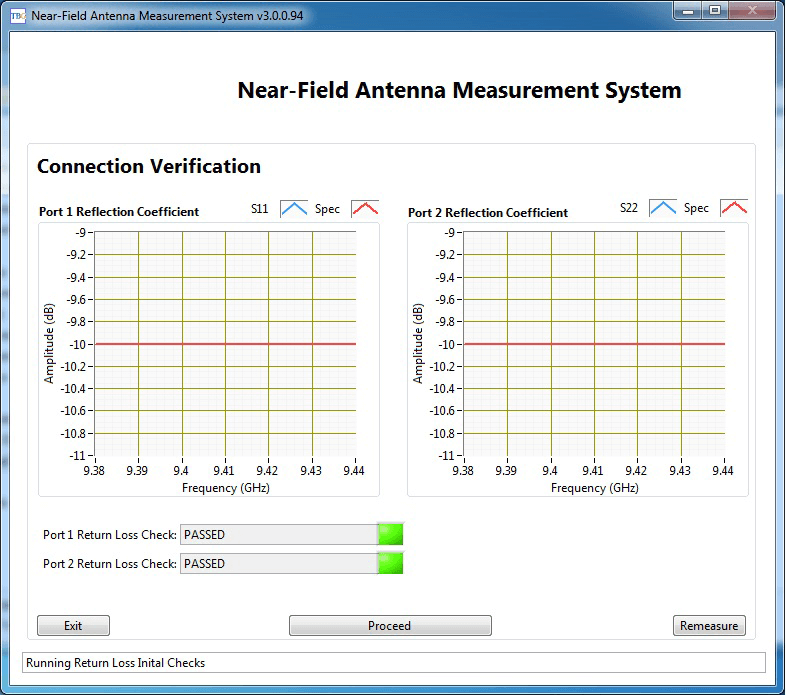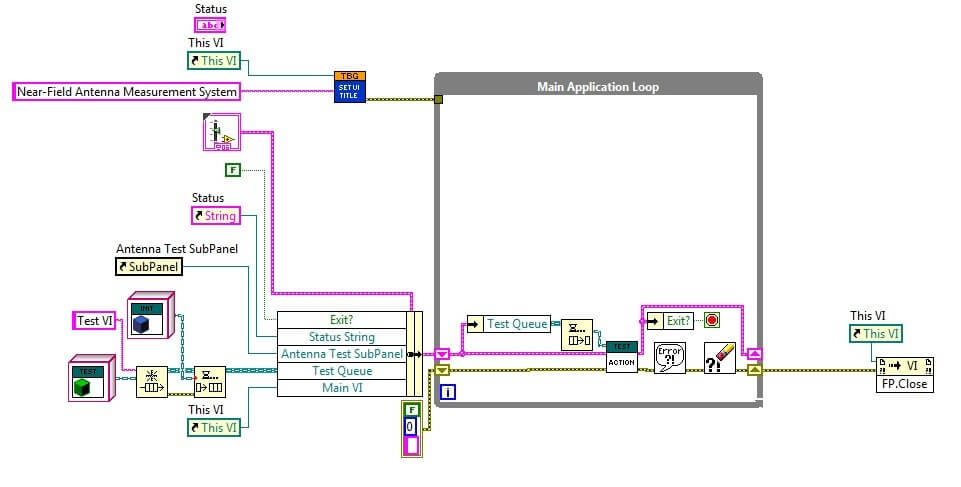Key Fact
The system can test the antenna response on a user-defined range of frequencies (expanding on the limited S and X Bands), both stationary, and along the length of the antenna.

Testimonials
“The Antenna Test system exceeded the original Test Software surpassing the test specification and has now replaced the old system completely in a production environment as confidence in the software is so high.”
Understand
Introduction
Modern technology heavily relies on a wide range of transmissions, from simple AM Radio to Satellite Tracking Systems. All EM Communications require an antenna for both Transmission and Reception, making the production and supply of antennas a huge industry. Some suppliers push the boundaries on antenna size providing devices we rely on every day to be smaller and slimmer, such as Mobile Phones or the Bluetooth Antenna in your Smart Watch. Others, as in the case of our customer, push the boundaries on complexity, providing smarter RADAR and Detection systems that keep Ships and Aircraft safe.
TBG Solutions was contracted by the customer to update an existing Antenna Test System, written in a now unsupported software language. Unfortunately, the Source Code was no longer available and Test System had to be redesigned from scratch. TBG Solutions was involved from the beginning of the update project, to design and implement a modern test system. The test system needed to be expandable, hardware independent and compatible with multiple Network Analysers.
Antennas
Antennas are using in a wide range of industries and vary dramatically by both size and complexity. The range of frequencies each antenna is designed and tuned for can also vary significantly. The Antenna Test System was designed to test large RADAR antennas, designed and supplied to the Marine Industry. The frequency range of the Antenna Test System covers both the S and X Bands. S-Band covers 2-4GHz and is used by Surface Ship RADAR, as well as some communications satellites. The X-Band however, covers the higher range of 8-12GHz and is used in military Satellite Communications, along with more advanced RADAR.

Engineer
Our Solution was a system that could test the antenna response on a user-defined range of frequencies (expanding on the limited S and X Bands), both stationary, and along the length of the antenna. These measurements included both Phase and Magnitude on both Transmission and Reception, and measurements could also be expanded to include frequency sweeps at differing power levels. This gave the user full control over the measurement type.
Test System Design
The Modernised Test System was designed using NI LabVIEW Object Orientated Programming, along with an NI GPIB Card to Communicate to a Network Analyser which is used to conduct the tests. Due to the expandable nature of LabVIEW, especially when developed using Object Orientated Design Principles, we were able to design a system that could be quickly and easily updated to work on any programmable Network Analyser.
The Analyser was used to capture the responses to both transmission and reception for a specific Antenna. The test system captured “S” measurements (S11, S21, S22) and calculated both Phase and Magnitude for the captured responses.

The test system also comprised of a Step Motor that allowed the Test Software to move the test probe along the length of the antenna while simultaneously taking measurements. This allowed our customer to build a complete antenna profile which could be used in both design and verification activities. This data was then post analysed to generate Near Field and Far Field data allowing our customer to verify that their antenna or component was functioning correctly and responded as expected in real-world tests.

Test System Software
The control software for the Antenna Test System was written entirely in National Instruments LabVIEW. Using LabVIEW allowed us to construct an expandable and complex test system in a much shorter time than other text-based languages. The graphical nature of LabVIEW also allowed us to easily demonstrate the functionality and instruct our customer on making minor modifications to the functions of the Test System.
The Test System software was completed using Object Orientated Design principles which allowed us to develop Simulation Modules of all of the hardware in the system. This made debug very simple and independent of hardware. Once this was complete we were able to more easily develop modules for physical hardware (two different Network Analysers were required to be compatible, with more in the future).
Object Orientated Programming is a framework that allows code to be written using a generic module or “Class” for each of the functions of a piece of hardware (or function). An example would be taking a reading from a Network Analyser. This generic module is then used to create a specific module for a specific piece of hardware creating a “Child Class”. There can be multiple Child Classes with one for each specific piece of hardware. These Child Classes are automatically substituted when the software is run depending on the hardware element is selected. This makes adding new hardware simple as no changes to the software’s code are needed to facilitate additions. (except creating a new Child Class).
While coding modules, LabVIEW automatically checks that all the requirements for a Class are met, and reports any issues clearly. This allows an Object Orientated System to be coded by a developer with limited knowledge of the principles behind its operation.


Deliver
Results
The Antenna Test system exceeded the original Test Software surpassing the test specification. This Test System has now replaced the old system completely in a production environment as confidence in the software is so high. The system not only improves reliability, it also expands in the following areas:
· Data is provided at a much lower level, as well as a top-level result, allowing our customer to investigate design issues at a much lower level.
· The New System is already compatible with two differing hardware sets (which surpasses the old system), With more to be added as required.
· Our Customer is no longer tied to a specific (and expensive) Network Analyser, they are now free to explore cheaper options.
